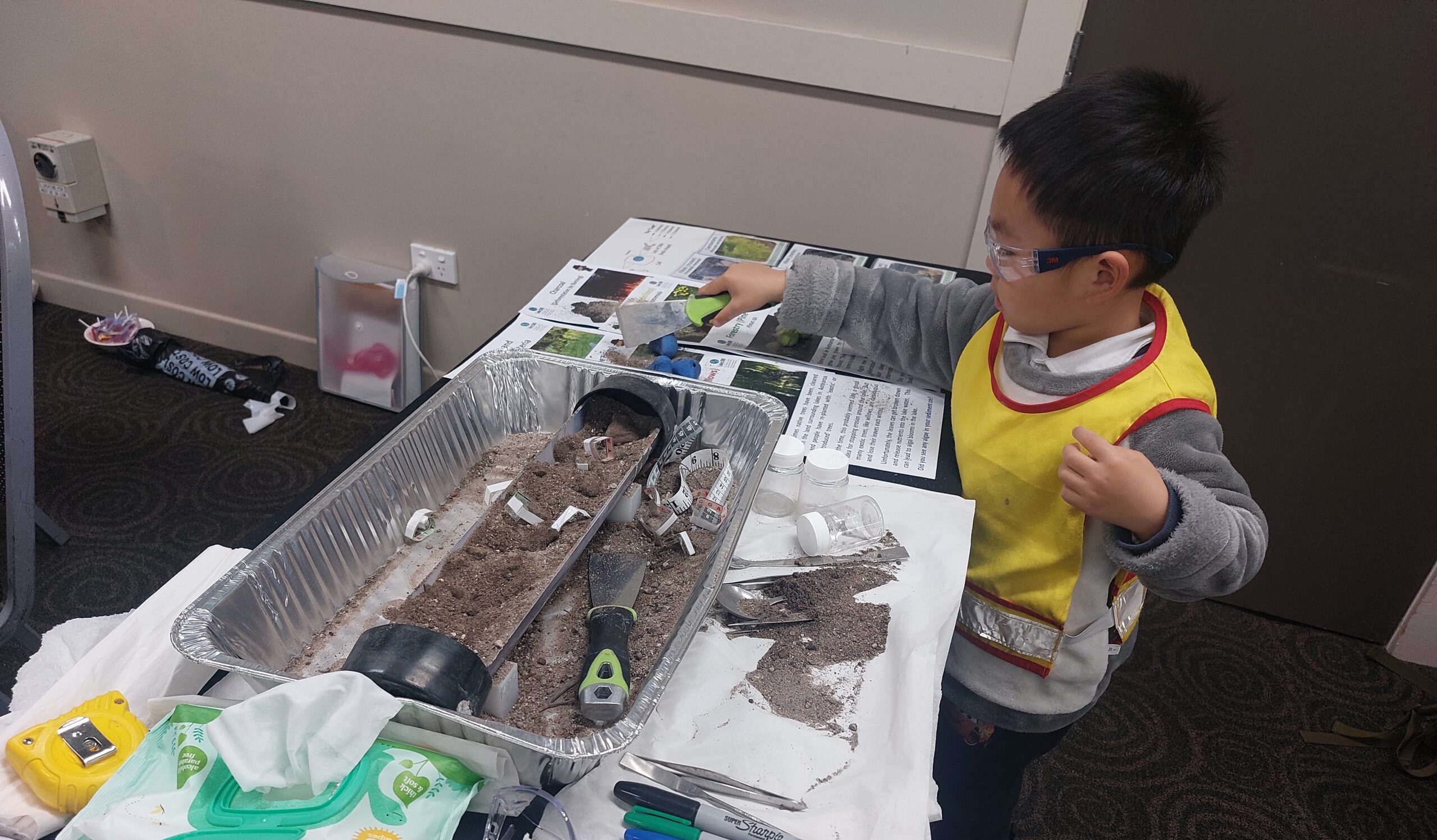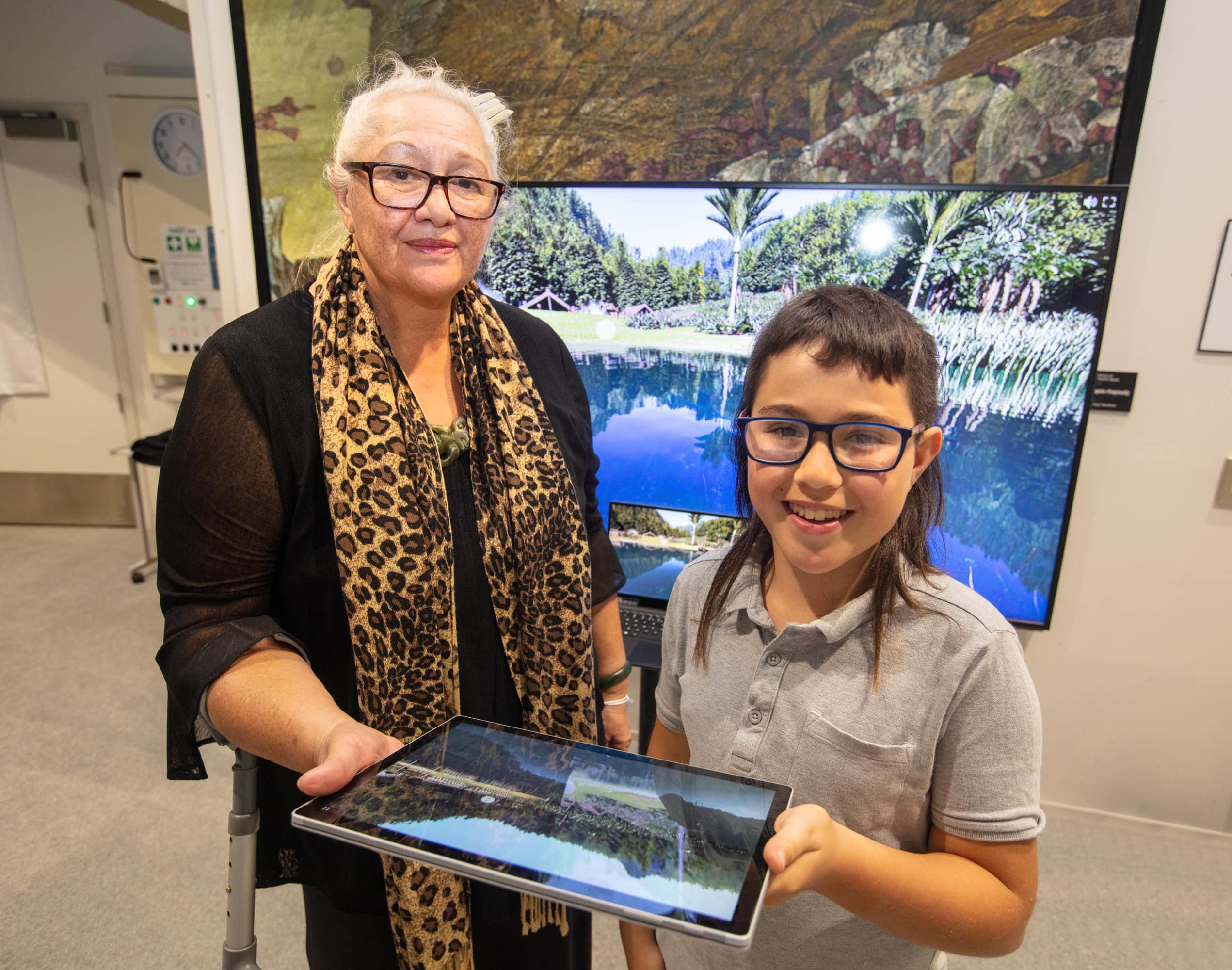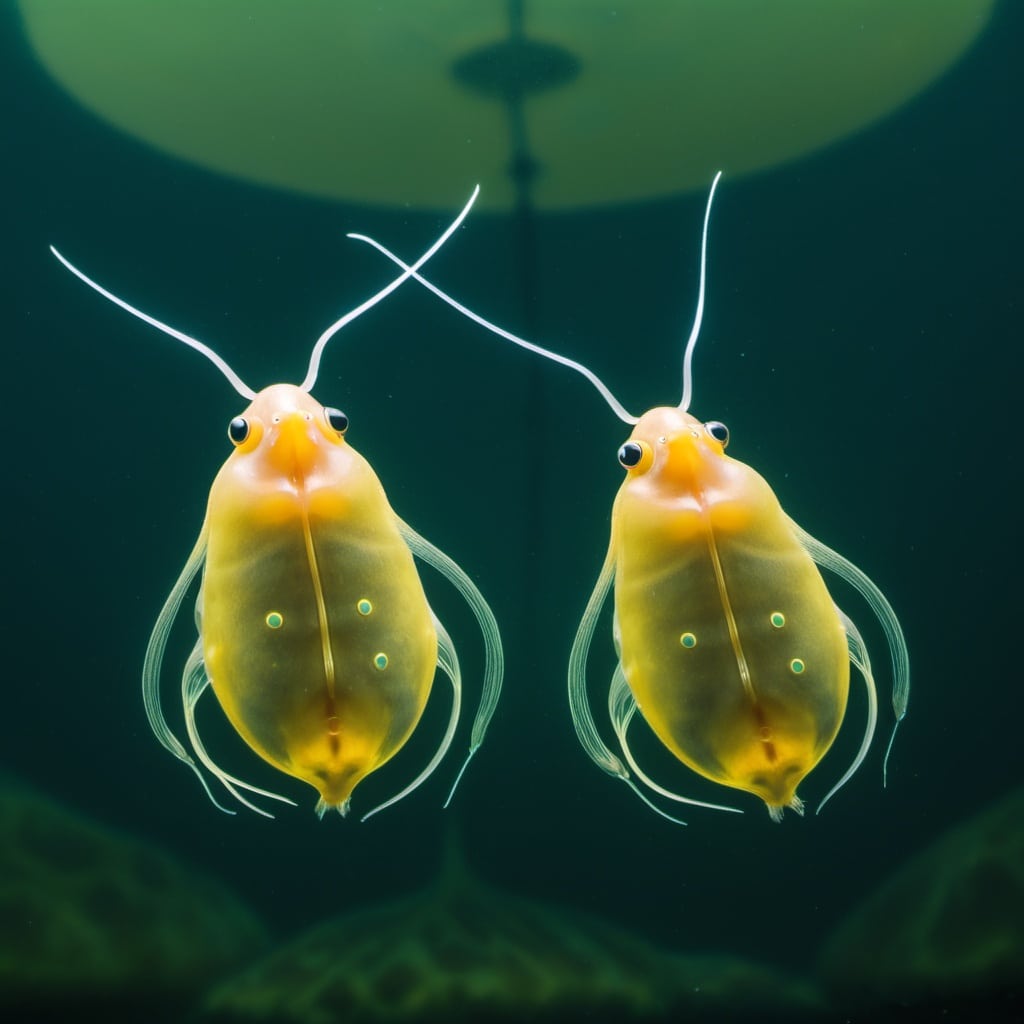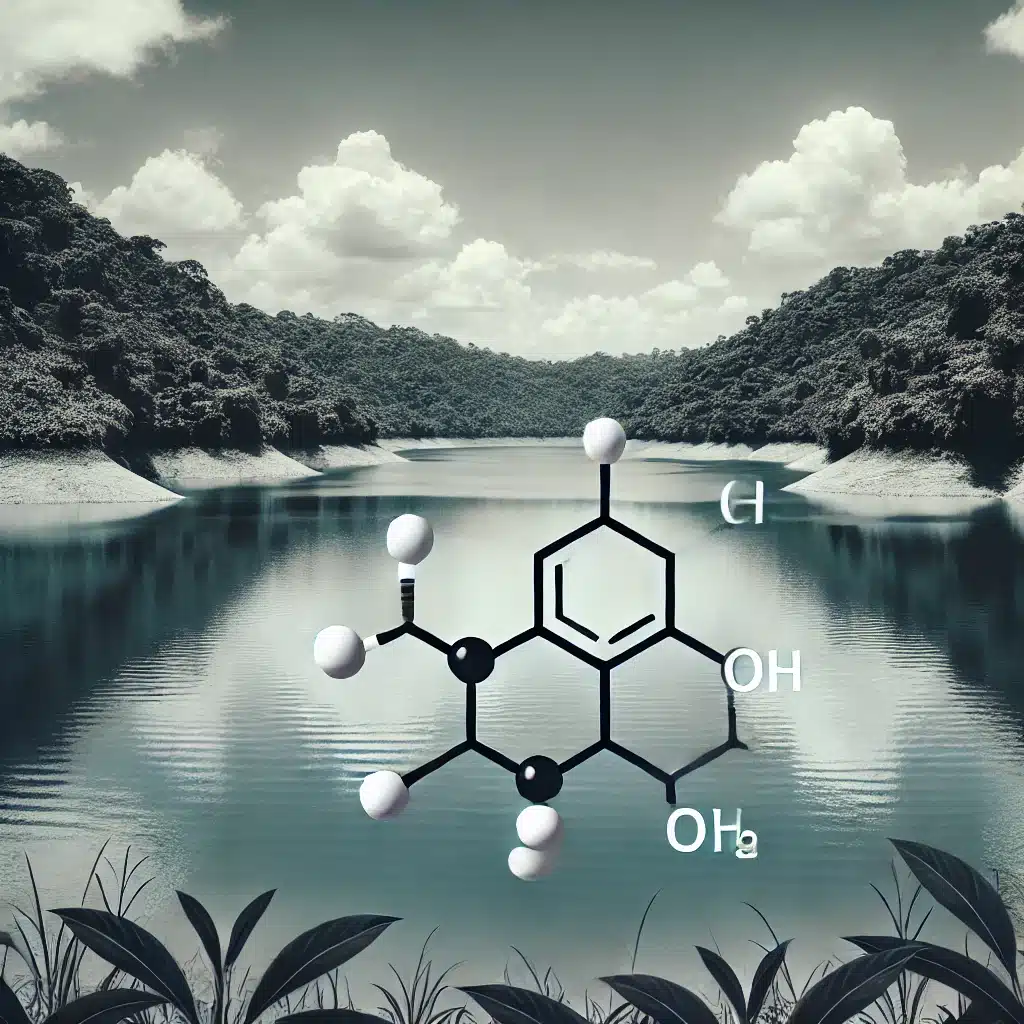A huge thank you to Our Lakes, Our Future team members Lizette Reyes and Te Aomania Te Kohe for representing the team at the Tūkohu Ngāwhā Science and Design Fair.
Lizette Reyes and Te Aomania Te Kohe wrote the below story on their experiences.
On the 3rd of July, Te Arawa Lakes Trust hosted the third annual Te Tūkohu Ngāwhā Science Fair. This event invites young people from across Te Arawa and beyond, to submit a project relating to the taiao.
The categories for this year’s science fair were Biosecurity, Biodiversity and Conservation, Water Quality, Sustainability, Mātauranga Māori, and Art (relating to one of the other categories). With 20 different kura participating and over 120 projects submitted, let’s just say the judges had a tough job to do. The creativity and calibre of the mahi these tamariki produced was truly impressive.
There were so many awesome projects, some of which received 1st, 2nd and 3rd place certificates in each category. The winner of the Te Arawa Lakes Trust Ngā Karu Atua Supreme Award was a team of students from Te Rangihakahaka Centre for Science and Technology. The question that they posed was “Could Hinemoa really hear Tūtānekai?” which set their project up as an intersect between the physical sciences and the mātauranga of the most famous love story in Te Arawa. These students measured the sound of a flute and calculated the percentage of sound loss across different distances over land vs water, and under various conditions. Using this data, they concluded that Hinemoa would have been able to hear the faintest whisper of Tūtānekai’s kōauau all the way from Mokoia in the still of the night under flat and quiet conditions… Or that his kōauau had be as loud as a lawn mower to be heard clearly. Kei runga noa atu koutou tamariki mā!
The Our Lakes, Our Future programme team, along with Cawthron Institute’s Fish Futures team, were invited to attend and support the science fair by running outreach booths.
Te Aomania Te Koha and Lizette Reyes attended on behalf of Our Lakes, Our Future Programme. Lizette ran a sediment core activity where participants searched through a lake sediment core replica for 3D-printed pollen grains and laminated eDNA strips. They were then tasked with identifying the species of their pollen grains and eDNA strips by matching their ‘samples’ to the information sheets and DNA codes we had provided.
The team also brought some pollen slides up to have a look at under the microscope provided by the Fish Futures team. Ngā mihi maioha ki a Olivier Raven me Pascale Otis!!!
Te Aomania showcased her bilingual pollen bingo game, a species identification game which can be played in either English or Te Reo Māori and that any age group can play – including these adorable three-year-olds and the slightly less adorable Vic and Waikato University researchers!!!
Te Tūkohu Ngāwhā Mātauranga Māori Science and Design Fair was an awesome opportunity to connect with our iwi partners, showcase some of our mahi and help to further inspire some of these VERY early career researchers. All in all, it was wonderful few days in Rotorua!




